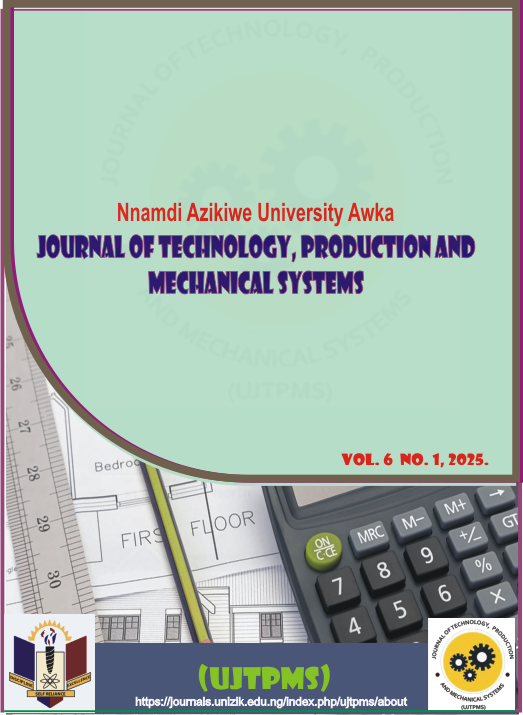Design, Optimization, and Determination of Lift and Drag forces of NACA Aerofoils for Enhanced Performance
Keywords:
NACA Aerofoil, Optimization, Lift Force, Drag Force, and AerodynamicsAbstract
The National Advisory Committee for Aeronautics (NACA) aerofoil shapes are widely used in aviation for wings, tails, and rotor blades but face challenges such as low lift, high drag, and poor stall behavior, leading to increased fuel consumption and accident risks. This study analyzes and optimizes the aerodynamic performance of NACA 4415, 2412, and 0015 aerofoils using XFLR5, considering parameters like wingspan, chord length, and thickness. Computational Fluid Dynamics (CFD) analysis and optimization tools in XFLR5 were used to evaluate and enhance performance. Results show that the modified NACA 4415, with higher camber, achieved the highest lift coefficient (Cl = 1.472) with an 8.47% improvement, a 52.11% reduction in drag, and an optimized lift-to-drag ratio of 48.34 (135.8% improvement), making it ideal for high-lift applications such as small aircraft and model planes. NACA 2412, with moderate camber, demonstrated a balanced performance with a Cl of 1.259 (3.71% improvement), a 47.41% drag reduction, and the highest lift-to-drag ratio of 50.163 (122.93% improvement), making it suitable for light aircraft, sailplanes, and aerodynamic research. NACA 0015, a symmetric aerofoil, exhibited the lowest lift coefficient (Cl = 1.033, 16.07% increase), 47.31% drag reduction, and the lowest lift-to-drag ratio of 36.903 (74.06% improvement), making it suitable for applications such as helicopter rotors, wind turbine blades, and marine technologies. The optimization results, showing convergence for most angles of attack except at 0° for all aerofoils, likely due to numerical instability or insufficient flow separation data. Additionally, NACA 0015 fails to converge at α = 13° and α = 14° due to excessive flow separation and vortex shedding, leading to unsteady aerodynamic forces that cause divergence in the solution. NACA 4415 and NACA 2412, while generally stable, exhibit minor convergence issues at α = 14° and α = 15°, respectively, likely due to the onset of stall, causing unsteady flow behavior. At α = 15°, the simulation converges, but NACA 0015 shows a sharp drop in Cl (0.445) and a Cd increase (0.152), confirming high drag due to stall effects, limiting its aerodynamic efficiency at high α. These modifications significantly enhance aerodynamic efficiency, improving fuel economy and performance across various aviation and engineering applications.
Downloads
Published
Issue
Section
License
Copyright (c) 2025 Authors

This work is licensed under a Creative Commons Attribution-NonCommercial 4.0 International License.






